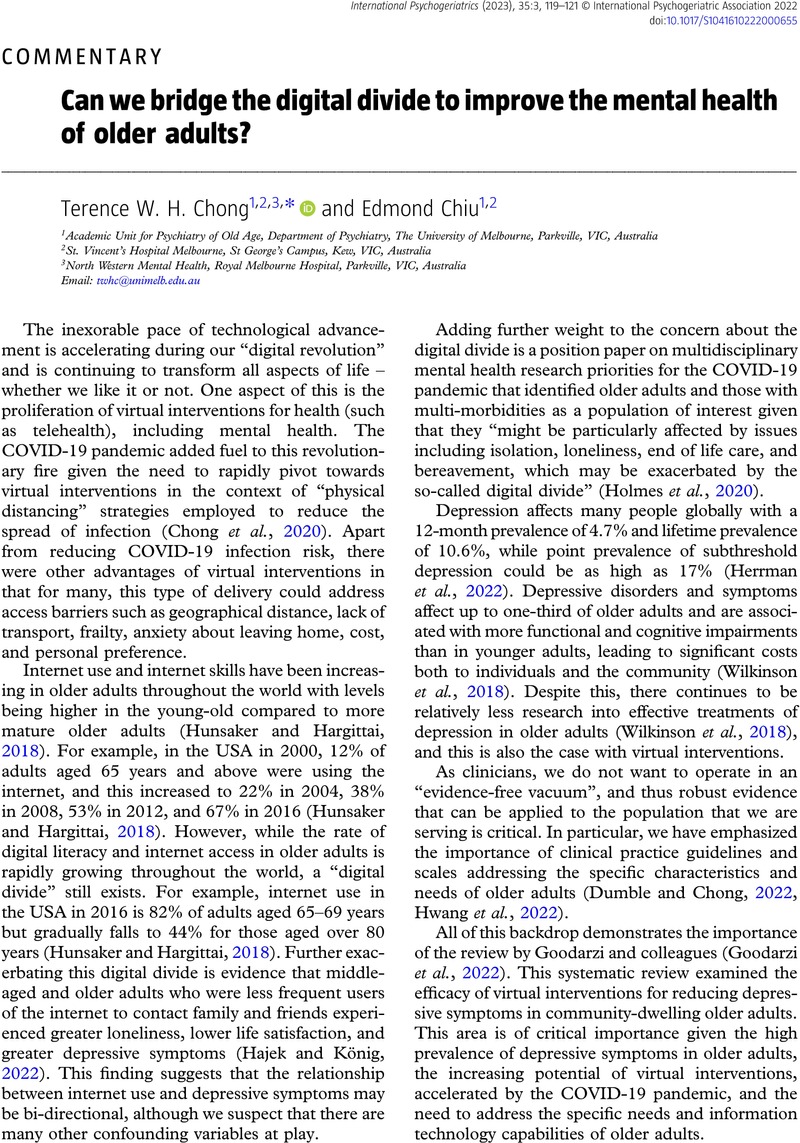Crossref Citations
This article has been cited by the following publications. This list is generated based on data provided by Crossref.
Pachana, Nancy A.
2023.
Innovative approaches to improving mental health and well-being in older people.
International Psychogeriatrics,
Vol. 35,
Issue. 3,
p.
117.
Chong, Terence W.H.
Curran, Eleanor
Southam, Jenny
Bryant, Christina
Cox, Kay L
Ellis, Kathryn A.
Anstey, Kaarin J.
Goh, Anita
and
Lautenschlager, Nicola T
2023.
The potential of physical activity and technology interventions to reduce anxiety in older adults.
Journal of Affective Disorders Reports,
Vol. 14,
Issue. ,
p.
100633.



